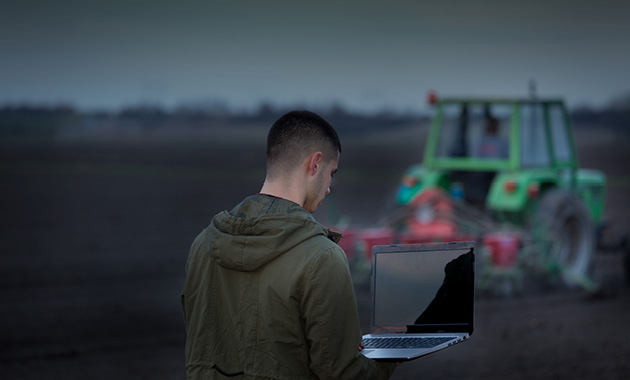
Agriculture is one of the main sectors to benefit from synergies between the flagship EU Space Programmes EGNOS, Galileo and Copernicus, with European-GNSS and Earth Observation technologies being leveraged to implement the Common Agricultural Policy. Representatives from national Paying Agencies, the European Commission, ESA and the GSA came together in a Learning Network Meeting of Directors of Paying Agencies and Coordinating Bodies, in Brussels on 10 July.
Agriculture is an important pillar of the EU economy, and one of the EU’s oldest policies - the Common Agricultural Policy (CAP) - supports farmers and helps safeguard Europe’s food security. The aims of the CAP include improving agricultural productivity so as to feed more people with limited resources, tackling climate change, supporting the sustainable management of natural resources and maintaining rural areas and landscapes across the EU.
The European Commission has started to revise the CAP to make it fit-for-purpose post-2020, and MEPs have called for a more forward-looking policy that will allow farmers to benefit fully from the potential of EU space technology.
Michael Niejahr, Director for legal, institutional and procedural matters at DG AGRI, stressed the importance of space technology for the future of agriculture in the EU. “The EU needs innovative solutions to improve the sustainability and efficiency of its agricultural sector and the EU Space Programmes hold a lot of potential in this regard, allowing farmers to improve the sustainability of their processes through precision farming techniques, and helping make the CAP future-proof,” he said.
Read this: Agriculture - A new frontier for European space policy
Innovative applications
If the goals of the CAP are to be achieved the agriculture sector will have to embrace innovation, including the effective solutions offered by space. The EU’s Space Programmes provide innovative applications that optimise agricultural production in Europe by making it more precise, sustainable and cost effective. The monitoring capabilities of Copernicus and the geo-tagging of E-GNSS (Galileo and EGNOS) can be combined to provide effective solutions for farmers to streamline their processes.
Speaking at a network meeting session on the use of new technologies for monitoring in the agriculture sector, GSA Market Development Officer Reinhard Blasi noted that synergies between the EU Space Programmes could potentially transform farming, bringing multiple benefits.
And this: 2018 ‘Farming by Satellite’ Prize launched in European Parliament
Tamper-proof technology
“The use of Sentinel data from Copernicus is possible within the Land Parcel Identification System (LPIS) of the CAP’s Integrated Administration and Control System (IACS),” Blasi said, adding that, when combined with E-GNSS in geo-tagged applications, this would reduce the need for intrusive on-the-spot checks. “Every farmer can benefit from E-GNSS in geo-tagging for aid applications and from crowd-sourcing of farm advice services,” he said.
Galileo’s higher accuracy empowers farmers to measure and geotag their fields themselves, and is a more robust solution, thanks to Galileo signal authentication. Furthermore, Copernicus field delineation is to be automated for claims under the CAP. This makes it easier for famers to take advantage of the EU Space Programmes, allowing many more farmers to benefit. Nine million farmers in the EU could potentially benefit from synergies between Galileo and Copernicus.
